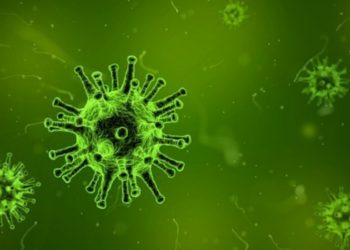AstraZeneca announced that the Phase III AURA3 trial met its primary endpoint, demonstrating superior progression-free survival (PFS) compared to standard platinum-based doublet chemotherapy.
The AURA3 randomised trial assessed the efficacy and safety of Tagrisso as a 2nd-line treatment in more than 400 patients with EGFR T790M mutation-positive, locally-advanced or metastatic NSCLC, whose disease had progressed following 1st-line EGFR tyrosine kinase inhibitor (TKI) therapy. Tagrisso also demonstrated a safety profile consistent with previous trials.
In addition to PFS, the objective response rate (ORR), disease control rate (DCR) and duration of response (DoR) also achieved clinically meaningful improvement versus chemotherapy. A full evaluation of AURA3 data, including an analysis of overall survival (OS), is ongoing, and results will be presented at an upcoming medical meeting.
Sean Bohen, Executive Vice President, Global Medicines Development and Chief Medical Officer at AstraZeneca, said: “These results confirm Tagrisso as a meaningful alternative to benefit EGFR T790M lung cancer patients.
The AURA3 results demonstrate the benefits of our science-led approach that enabled the rapid development of Tagrisso as a targeted treatment to address the most common cause of resistance to a first-generation EGFR-TKI for patients with metastatic EGFR-mutant lung cancer. We remain committed to exploring the potential of Tagrisso to further extend its reach and help meet patient need.”
Tagrisso is one of the fastest development programmes ever, from start of clinical trials to approval in just over two and a half years. It was approved in the US, EU, Japan, Canada, Switzerland, Israel and Mexico as the first treatment for patients with EGFR T790M mutation-positive advanced NSCLC. Tagrisso is also approved in South Korea in the same indication.
Eligibility for treatment with Tagrisso is dependent on confirmation that the EGFR T790M mutation is present in the tumour.
AstraZeneca is committed to exploring the full potential of Tagrisso as monotherapy and in combination, for patients with lung cancer, including in adjuvant and locally-advanced/ metastatic 1st-line EGFRm settings. In addition, AstraZeneca is exploring Tagrisso in NSCLC patients with and without brain metastases, and has presented encouraging data in a small cohort of patients with leptomeningeal disease.
About Non-Small Cell Lung Cancer (NSCLC)
Lung cancer is the leading cause of cancer death among both men and women, accounting for about one-third of all cancer deaths and more than breast, prostate and colorectal cancers combined. Patients who have the EGFRm form of NSCLC, which occurs in 10-15% of NSCLC patients in the US and Europe and 30-40% of NSCLC patients in Asia, are particularly sensitive to treatment with currently-available EGFR-TKIs, which block the cell signalling pathways that drive the growth of tumour cells. However, tumours almost always develop resistance to treatment, leading to disease progression. In approximately two-thirds of patients treated with approved EGFR-TKIs such as gefitinib and erlotinib, this resistance is caused by the secondary mutation, T790M.
About Tagrisso
Tagrisso (osimertinib, AZD9291) 80mg once-daily tablet is the first medicine indicated for the treatment of adult patients with locally-advanced or metastatic EGFR T790M mutation-positive NSCLC. Tagrisso is as an irreversible EGFR inhibitor, born out of scientific exploration and engineered to combat the mechanism of resistance by targeting the T790M resistance mutation.
Tagrisso is also being investigated in the adjuvant and metastatic 1st-line settings, including in patients with and without brain metastases, in leptomeningeal disease, and in combination with other treatments.
About AURA3
AURA3 compared the efficacy and safety of Tagrisso 80mg once daily and platinum-based doublet chemotherapy in 419 patients with EGFR T790M mutation-positive, locally-advanced or metastatic NSCLC whose disease had progressed on or after treatment with a previous EGFR-TKI. The trial was carried out in more than 130 locations worldwide, including the USA, Canada, Europe, China, Japan, Korea, Taiwan and Australia.

















